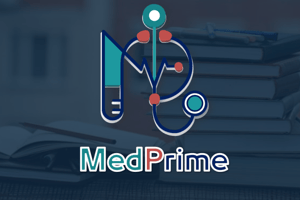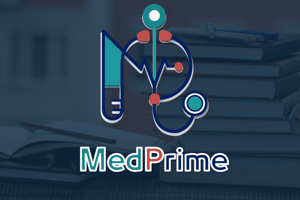Podcast
Questions and Answers
Which natural anticoagulant binds with thrombin to form a complex that activates protein C?
Which natural anticoagulant binds with thrombin to form a complex that activates protein C?
What percentage of thrombin is estimated to be adsorbed to fibrin threads, preventing excessive clot spread?
What percentage of thrombin is estimated to be adsorbed to fibrin threads, preventing excessive clot spread?
The primary source of heparin in the body is:
The primary source of heparin in the body is:
Heparin's anticoagulant action is significantly enhanced when it combines with:
Heparin's anticoagulant action is significantly enhanced when it combines with:
Which component of the fibrinolytic system is responsible for digesting fibrin threads and other protein coagulants?
Which component of the fibrinolytic system is responsible for digesting fibrin threads and other protein coagulants?
The tissue plasminogen activator (t-PA) is primarily released from:
The tissue plasminogen activator (t-PA) is primarily released from:
Which of the following is NOT a plasminogen activator?
Which of the following is NOT a plasminogen activator?
What is the primary function of the t-PA inhibitor?
What is the primary function of the t-PA inhibitor?
Haemophilia A is caused by a deficiency in which clotting factor?
Haemophilia A is caused by a deficiency in which clotting factor?
Which condition is characterized by both excessive bleeding and intravascular clotting?
Which condition is characterized by both excessive bleeding and intravascular clotting?
How does the smoothness of the endothelial surface contribute to the prevention of blood clotting?
How does the smoothness of the endothelial surface contribute to the prevention of blood clotting?
The glycocalyx layer on the endothelium aids in preventing blood clot formation by:
The glycocalyx layer on the endothelium aids in preventing blood clot formation by:
If the endothelial wall is damaged, what is the potential consequence in terms of blood clotting?
If the endothelial wall is damaged, what is the potential consequence in terms of blood clotting?
What is the role of antithrombin III in regulating blood clotting?
What is the role of antithrombin III in regulating blood clotting?
The effectiveness of antithrombin III in removing thrombin increases significantly when it combines with:
The effectiveness of antithrombin III in removing thrombin increases significantly when it combines with:
Apart from removing thrombin, the heparin-antithrombin complex also removes other activated coagulation factors, including:
Apart from removing thrombin, the heparin-antithrombin complex also removes other activated coagulation factors, including:
What triggers the conversion of plasminogen to plasmin in the fibrinolytic system?
What triggers the conversion of plasminogen to plasmin in the fibrinolytic system?
The primary role of urokinase in the plasmin system is to:
The primary role of urokinase in the plasmin system is to:
Which medical condition can benefit from the clinical use of fibrinolysis through the administration of t-PA, streptokinase, or urokinase?
Which medical condition can benefit from the clinical use of fibrinolysis through the administration of t-PA, streptokinase, or urokinase?
In thrombocytopenic purpura, the platelet count typically falls below:
In thrombocytopenic purpura, the platelet count typically falls below:
Non-thrombocytopenic purpura can be caused by:
Non-thrombocytopenic purpura can be caused by:
Which type of haemophilia is the most common, representing 85% of cases?
Which type of haemophilia is the most common, representing 85% of cases?
Haemophilia is a:
Haemophilia is a:
Which of the following factors can contribute to thrombo-embolic conditions?
Which of the following factors can contribute to thrombo-embolic conditions?
Disseminated Intravascular Coagulation (DIC) can be triggered by:
Disseminated Intravascular Coagulation (DIC) can be triggered by:
Flashcards are hidden until you start studying
Study Notes
Blood Physiology: Key Concepts and Facts
- Thrombomodulin binds with thrombin, forming a complex that activates protein C, functioning as a natural anticoagulant.
- Thrombin is adsorbed to fibrin threads, with an estimated 85-90% of thrombin preventing excessive clot spread.
- Heparin, primarily sourced from mast cells, enhances its anticoagulant action when combined with antithrombin III.
- Plasmin, derived from plasminogen, is responsible for digesting fibrin threads in the fibrinolytic system.
- Tissue plasminogen activator (t-PA) is mainly released from injured tissues and vascular endothelium.
- Thrombin is not classified as a plasminogen activator; others include urokinase and streptokinase.
- The t-PA inhibitor primarily delays fibrinolysis, regulating the breakdown of clots.
- Hemophilia A results from a deficiency in factor VIII, leading to excessive bleeding.
- Disseminated Intravascular Coagulation (DIC) is characterized by both excessive bleeding and intravascular clotting.
Endothelial Effects on Clotting
- A smooth endothelial surface helps prevent blood clotting by inhibiting the intrinsic clotting system's activation.
- The glycocalyx layer on endothelium repels clotting factors and platelets, thereby preventing clot formation.
- Damage to the endothelial wall activates both factor XII and platelets, initiating the intrinsic clotting mechanism.
Antithrombin III and Regulation of Clotting
- Antithrombin III inactivates remaining thrombin not adsorbed to fibrin, playing a critical role in blood clot regulation.
- The effectiveness of antithrombin III increases significantly when it combines with heparin, enhancing thrombin removal.
- The heparin-antithrombin complex also removes activated coagulation factors including factors II, VII, and IX.
Plasmin System and Fibrinolysis
- The conversion of plasminogen to plasmin is triggered by the release of t-PA from injured tissues, crucial for clot breakdown.
- Urokinase's primary role involves preventing clot formation specifically within the urinary tract.
- Medical conditions such as acute myocardial infarction can benefit from fibrinolysis through t-PA, streptokinase, or urokinase administration.
Thrombocytopenia and Purpura
- Thrombocytopenic purpura occurs when the platelet count falls below 50,000/mm³.
- Non-thrombocytopenic purpura arises from decreased functioning platelets or defects in the vessel wall rather than platelet count reduction.
- Hemophilia A represents 85% of hemophilia cases and is classified as a sex-linked recessive disease.
Thromboembolism and DIC Triggers
- Thrombo-embolic conditions can occur due to very slow blood flow and rough endothelial surfaces.
- DIC may be triggered by severe medical situations like septic shock, retaining a dead fetus in the uterus, or repeated blood transfusions.
Studying That Suits You
Use AI to generate personalized quizzes and flashcards to suit your learning preferences.





